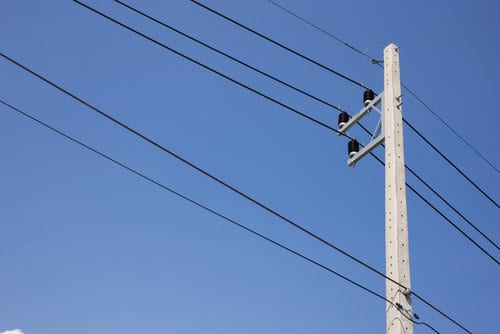Australia’s electricity generation and distribution sector is at a major crossroads, according to a new report by Ernst & Young, with 2016 promising to be a “game-changer”, driven by a surge in investor interest in renewables and the growing uptake of disruptive energy technologies like battery storage.
The report, released on Monday, pinpoints Australia as a regional hot spot for renewable energy and electricity asset deal activity in 2016, the nature of which, it says, is likely to have lasting impact.


“Momentum is rapidly building from disruptive technologies that are empowering consumers and changing the face of the sector. Expect the unexpected,” said report author Matt Rennie, EY Oceania Power & Utilities Leader.
Rennie says energy technology – particularly battery storage and accompanying smart technologies – as well a growing consumer shift to grid independence will also set off a new wave of M&A, with technology companies and utilities forming partnerships to retain their roles in the value chain.
This trend of “cross-sector convergence” drove global deals valued at a total of $US33 billion in 2015, including Europe’s biggest transaction of the year, F ortum’s sale of its Swedish distribution business to a Canada-based consortium of financial investors for $US7 billion. Also in 2015, E.ON divested assets worth $US2.06 billion, while RWE began the process of divesting from its oil and gas exploration and production unit, DEA.
ortum’s sale of its Swedish distribution business to a Canada-based consortium of financial investors for $US7 billion. Also in 2015, E.ON divested assets worth $US2.06 billion, while RWE began the process of divesting from its oil and gas exploration and production unit, DEA.
“Australia is seen by many as a test-bed for battery storage technology innovation, with relatively high retail electricity prices, the highest penetration of rooftop solar PV in the world and a tech-savvy population,” Rennie says.
“So we expect M&A activity in Australia to be stimulated by this continued adoption of rooftop solar and a growing consumer inclination toward grid independence.
“Utilities are responding to this trend by seeking partnerships with battery storage players such as Tesla and Panasonic to offer customised services to consumers. We are also seeing non-traditional players enter the market.”
Rennie said Australia’s revised Renewable Energy Target was also expected to “trigger a wave of new renewables projects”, boosted by a range of state and local government-based wind and solar energy programs and more positive renewable energy policy support in recent months.
The report points to the example of Queensland utility, Ergon Energy, whose recent tender to buy 150MW of renewable energy capacity attracted strong interest from a range of parties.
In January, privately-owned Alinta Energy also called for expressions of interest for large-scale generation certificates and renewable energy, signalling the end of what had widely been seen as a capital strike by Australian energy retailers.
But for the incumbents of the energy generation and distribution industry, 2016 brings a warning from EY, that the valuations of grid and generation assets will, increasingly, be impacted by the growing penetration of renewables and other disruptive technologies.
“While these developments are positive for (Australia’s) clean energy sector,” the report says, “existing coal-fired generators will need to review costs and flexibility of operations if they are to remain in the merit order.
Already, notes the report, energy efficiency measures and demand response programs are reducing electricity demand, with annual energy consumption in Australia’s eastern states down 7 per cent between 2009 and 2014.
“Many in the industry believe that 2016 will be a critical year that reveals more about the timing and degree of impact of these disruptive technologies on valuations,” said Rennie.
 For Australia, these trends follow on from a 2015 which saw deal activity in the sector doubled to a four-year high of $A17.6 billion ($US12.2bn) coming from nine deals, mostly due to the $A10.3 billion privatisation of NSW state-owned TransGrid – the process of which is set to continue in 2016 with potential longtime lease of both AusGrid and Endeavour Energy.
For Australia, these trends follow on from a 2015 which saw deal activity in the sector doubled to a four-year high of $A17.6 billion ($US12.2bn) coming from nine deals, mostly due to the $A10.3 billion privatisation of NSW state-owned TransGrid – the process of which is set to continue in 2016 with potential longtime lease of both AusGrid and Endeavour Energy.
Investment in large-scale renewables projects, however, reached just $1.16 billion in 2015 – about one-third of what is required to meet the 2020 revised RET of 33,000GWh; that is, about 5000MW of new projects and billions of dollars in investment in the next few years.
Globally in 2015, deal value in the sector reached a six-year high of $US200 billion, with renewables accounting for a huge 50 per cent of all transactions, with 245 deals generating $US68 billion.










